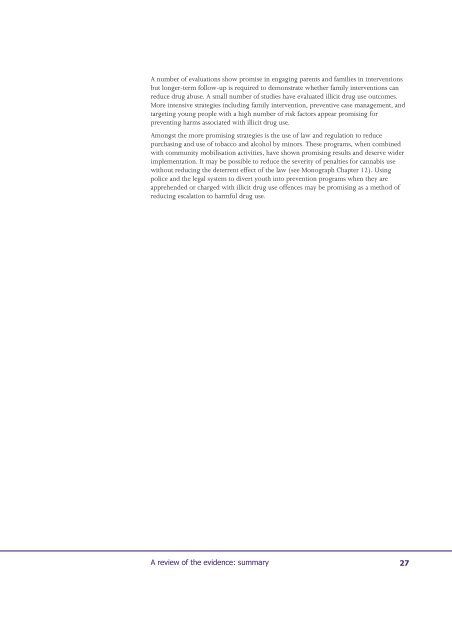Summary - Department of Health and Ageing
Summary - Department of Health and Ageing
Summary - Department of Health and Ageing
You also want an ePaper? Increase the reach of your titles
YUMPU automatically turns print PDFs into web optimized ePapers that Google loves.
A number <strong>of</strong> evaluations show promise in engaging parents <strong>and</strong> families in interventions<br />
but longer-term follow-up is required to demonstrate whether family interventions can<br />
reduce drug abuse. A small number <strong>of</strong> studies have evaluated illicit drug use outcomes.<br />
More intensive strategies including family intervention, preventive case management, <strong>and</strong><br />
targeting young people with a high number <strong>of</strong> risk factors appear promising for<br />
preventing harms associated with illicit drug use.<br />
Amongst the more promising strategies is the use <strong>of</strong> law <strong>and</strong> regulation to reduce<br />
purchasing <strong>and</strong> use <strong>of</strong> tobacco <strong>and</strong> alcohol by minors. These programs, when combined<br />
with community mobilisation activities, have shown promising results <strong>and</strong> deserve wider<br />
implementation. It may be possible to reduce the severity <strong>of</strong> penalties for cannabis use<br />
without reducing the deterrent effect <strong>of</strong> the law (see Monograph Chapter 12). Using<br />
police <strong>and</strong> the legal system to divert youth into prevention programs when they are<br />
apprehended or charged with illicit drug use <strong>of</strong>fences may be promising as a method <strong>of</strong><br />
reducing escalation to harmful drug use.

















